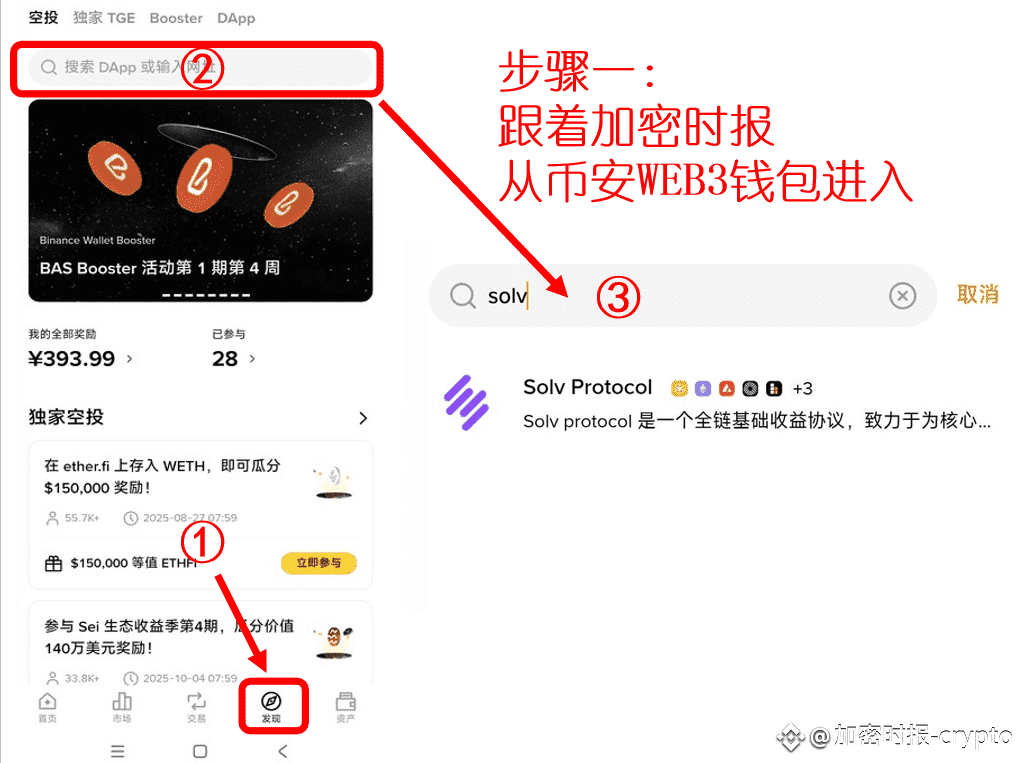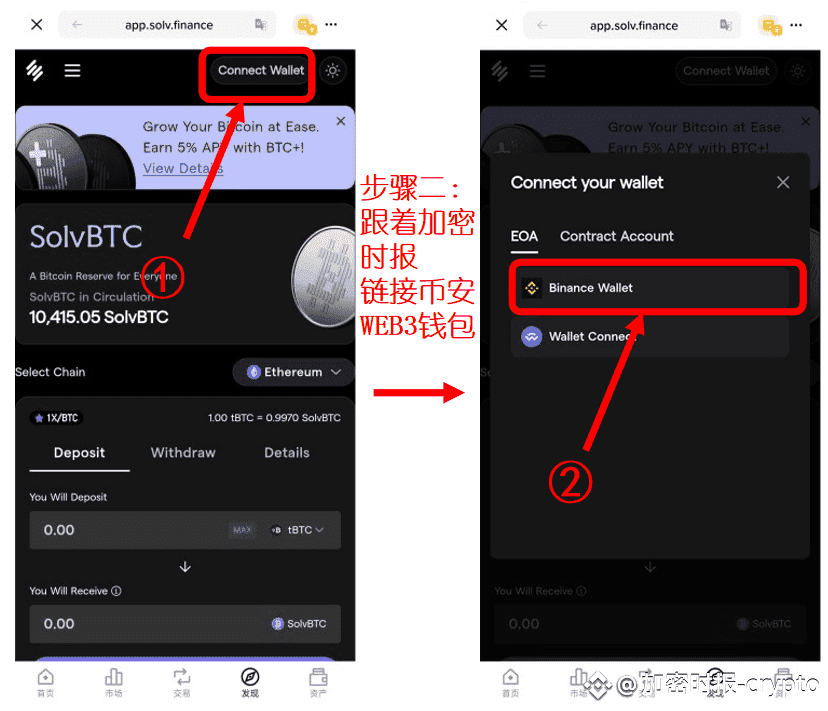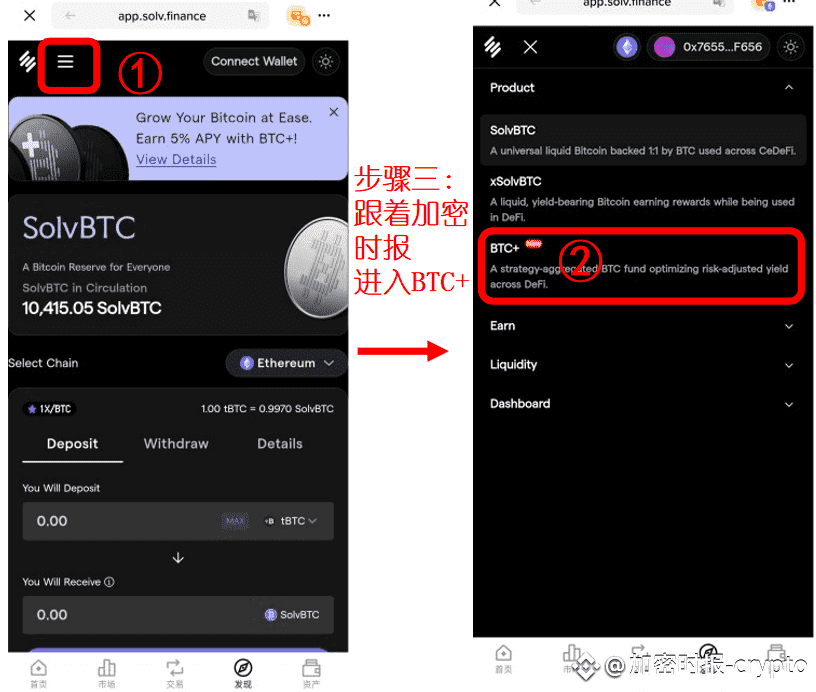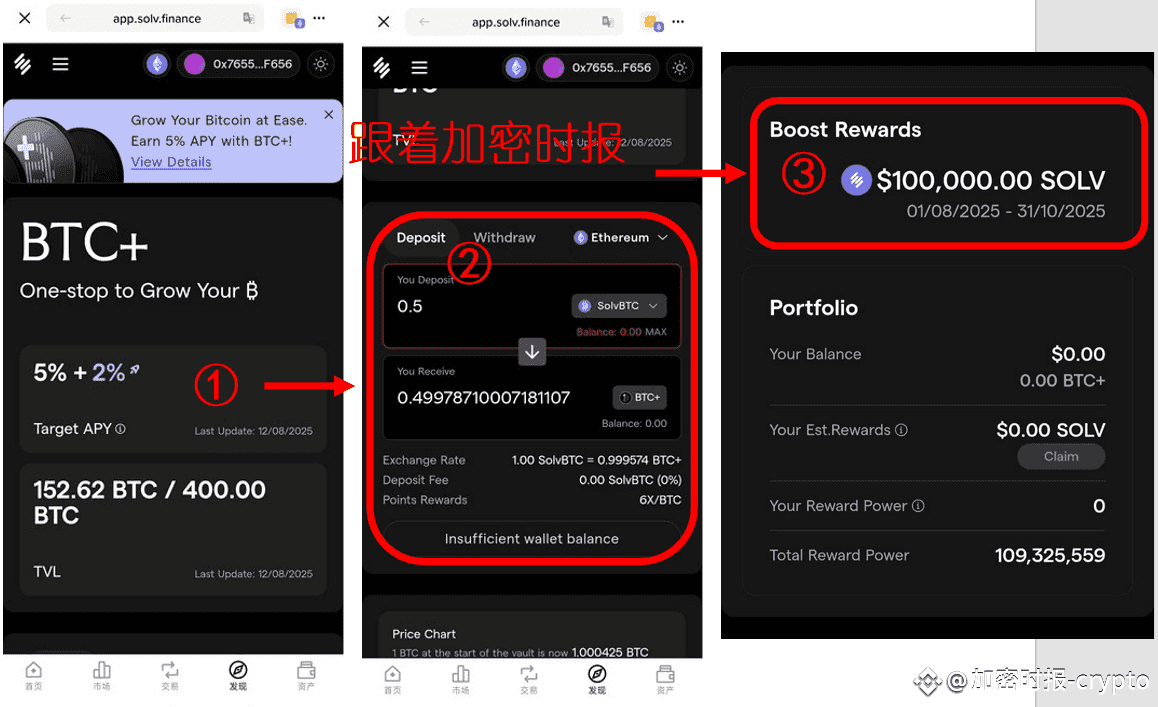The SOLV official website has released the BTC+ vault tasks! Super easy, the activity ends on October 31!
Although the airdrop is only around 5U-20U, don't be discouraged, because the airdrop is really very easy! Just stake 12U of BTC, with a loss of 0.1U of BNB, and you can claim the airdrop on October 31!
Many friends still don't know how to complete the tasks, so I will write down the operating tutorial for you:
1️⃣ Enter the SOLV official website: Open the Binance APP → Tap [Web3 Wallet] at the bottom → Enter [DApp Browser] to search for SOLV


2️⃣ Deposit BTC for lock-up: Click [BTC+] on the left menu of the official website → Enter the activity page (the top shows the current annualized return + remaining airdrop pool)

3️⃣ Confirm the transaction and wait for the money: Verify deposit information → Binance wallet authorization → Pay a very low gas fee, done!

Once it's done, you can receive interest + airdrop rewards on October 31!
On August 1, Solv officially launched an innovative BTC+ institutional-grade Bitcoin yield vault for all users, creating a convenient and profitable Bitcoin investment channel for investors. The following will provide a detailed analysis from the aspects of return situation, activity rules, and advantages.
1. Basic return situation
This vault provides users with a basic annualized return of 5 - 6%. Assuming a user deposits 1 BTC to participate in the activity and chooses a 180-day lock-up period, the basic return for 180 days is approximately 0.025 - 0.03 BTC based on simple annualized calculation. The calculation process is as follows:
If the annualized return is 5%, the return for 180 days (about 0.5 years) = 1×5%×0.5 = 0.025 BTC.
If the annualized return is 6%, the return for 180 days = 1×6%×0.5 = 0.03 BTC.
This basic return provides users with a stable return expectation, which has a certain competitiveness compared to some traditional low-risk investment products.
2. Additional reward mechanism
In addition to the basic returns, users also have the opportunity to receive additional SOLV rewards. The activity has set up a $100,000 SOLV reward pool, and after users set the lock-up time, they will participate in the distribution of this reward pool based on the time-weighted mechanism. The specific rule is: the longer the lock-up time, the higher the allocation weight in the reward pool, and the more generous the SOLV rewards they can receive.
To illustrate with an extreme case: suppose there are only two users participating in the reward pool, User A locks in for 90 days, and User B locks in for 180 days. Under the time-weighted mechanism, User B's allocation weight will be higher than User A's, thus receiving more SOLV rewards. Although in reality there are many participating users, this mechanism clearly encourages long-term holding by users and provides additional yield incentives for investors.



